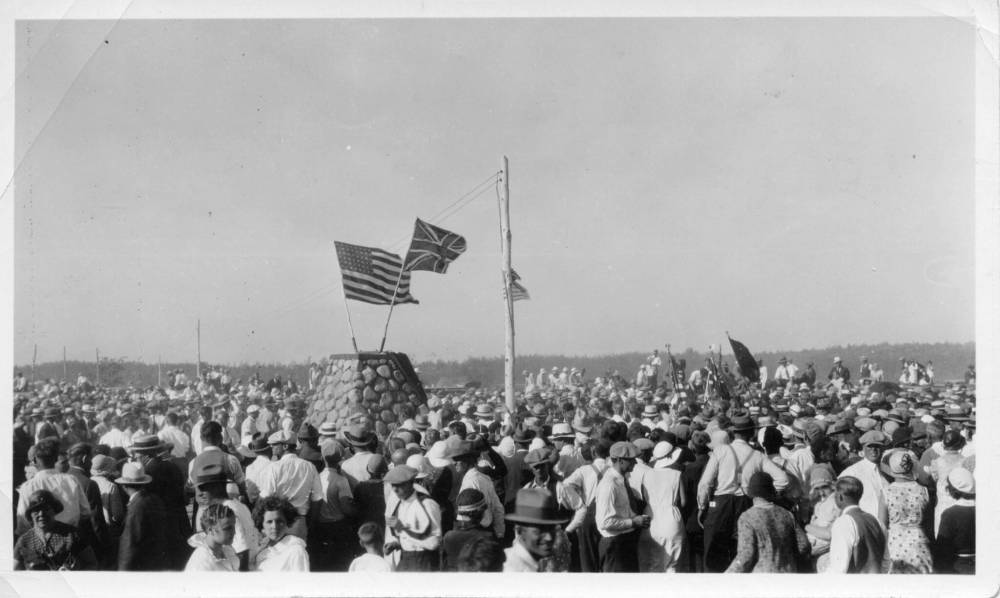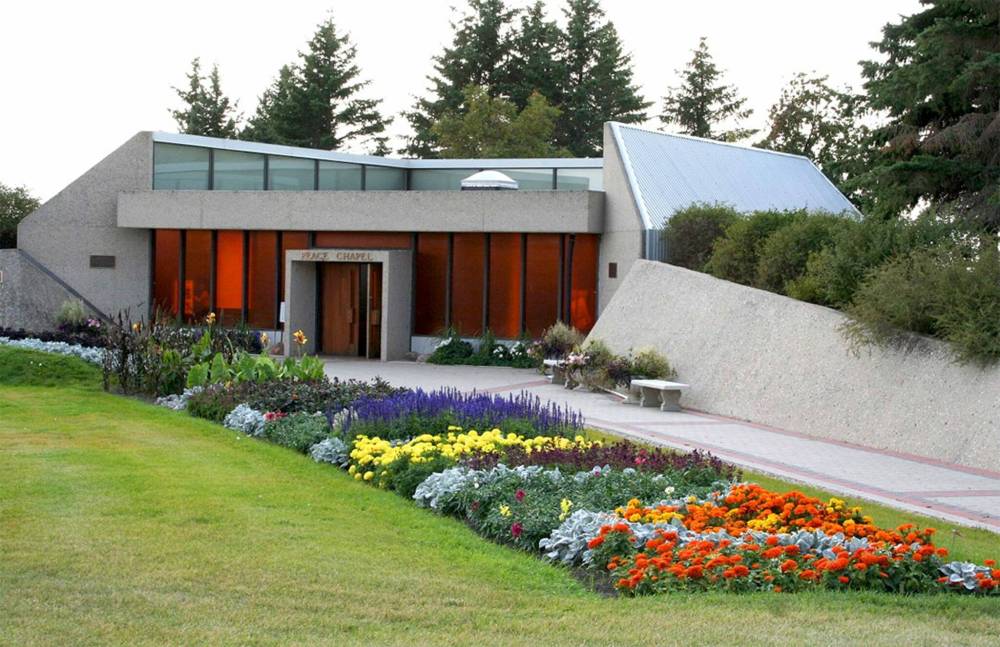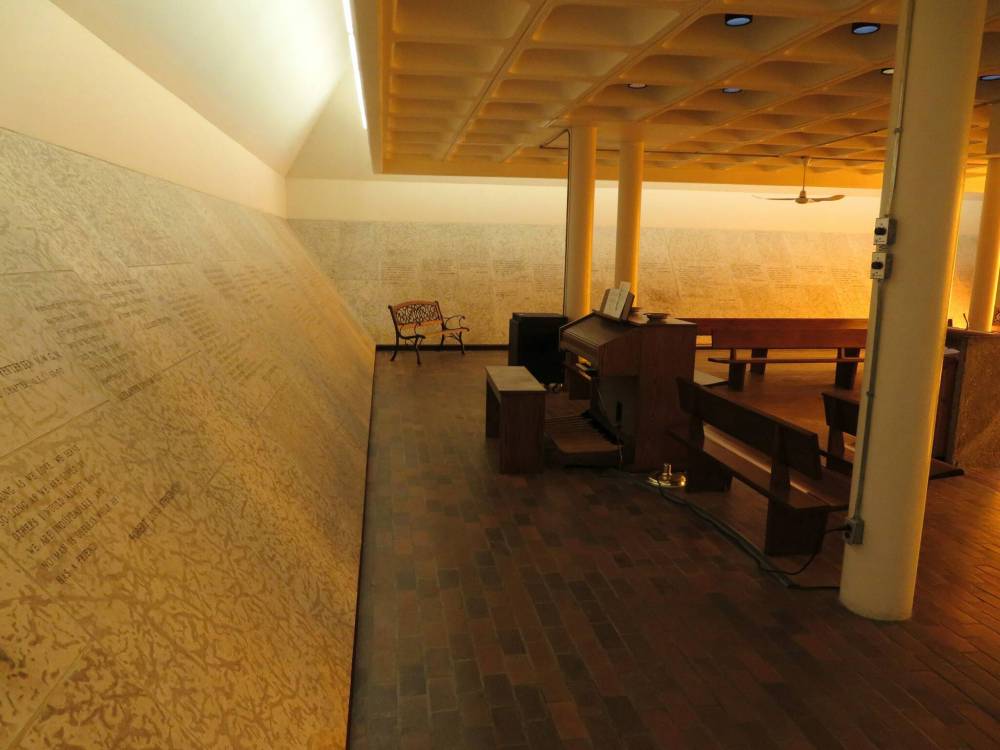Can spirit of hope outlast hostility? Created to salute Canada-U.S. bond, peace garden now seems a place out of time
Read this article for free:
or
Already have an account? Log in here »
To continue reading, please subscribe:
Monthly Digital Subscription
$1 per week for 24 weeks*
- Enjoy unlimited reading on winnipegfreepress.com
- Read the E-Edition, our digital replica newspaper
- Access News Break, our award-winning app
- Play interactive puzzles
*Billed as $4.00 plus GST every four weeks. After 24 weeks, price increases to the regular rate of $19.00 plus GST every four weeks. Offer available to new and qualified returning subscribers only. Cancel any time.
Monthly Digital Subscription
$4.75/week*
- Enjoy unlimited reading on winnipegfreepress.com
- Read the E-Edition, our digital replica newspaper
- Access News Break, our award-winning app
- Play interactive puzzles
*Billed as $19 plus GST every four weeks. Cancel any time.
To continue reading, please subscribe:
Add Free Press access to your Brandon Sun subscription for only an additional
$1 for the first 4 weeks*
*Your next subscription payment will increase by $1.00 and you will be charged $16.99 plus GST for four weeks. After four weeks, your payment will increase to $23.99 plus GST every four weeks.
Read unlimited articles for free today:
or
Already have an account? Log in here »
Hey there, time traveller!
This article was published 28/03/2025 (217 days ago), so information in it may no longer be current.
As American president Donald Trump continues to threaten Canada with tariffs, the turmoil caused by rising prices, trade disruptions and economic uncertainty is inflicting real harm on our country.
But I think for many Canadians, what really gets us riled up is Trump’s rhetoric. He adds insult to injury when he talks in that bullying, belittling, joking-not-joking way about Canada as “the 51st state,” when he describes us as “the nastiest country to deal with,” when he suggests our border is just an arbitrary line that needs to be redrawn.
The unfamiliar feeling of animosity between the two countries has many Canadians reconsidering travel to the United States. And this issue — to visit or not visit — becomes even more pointed when thinking about the International Peace Garden, located on the U.S.-Canada border near Boissevain and Dunseith, N.D.

Fred McGuinness collection/SJ McKee Archives/Brandon University
The grand opening of the International Peace Garden in 1932. The International Peace Garden is located on the U.S.-Canada border near Boissevain.
This 970-hectare site, which features areas of forest, prairie and garden, was planned in 1932 as a celebration of the long history of friendship between the two nations.
As the Free Press reported in February, many prospective visitors are feeling conflicted. Is this the time to send a message to America by boycotting the International Peace Garden? Or do its founding principles of peace and co-operation need our support now more than ever?
This is a big political question, but it also feels personal to me. My father, architect R.D. (Doug) Gillmor, designed the garden’s Peace Chapel.
Built in 1968, the non-denominational chapel is actually situated on the land of both countries. What is often called the longest undefended border in the world runs right through it.
A low-lying, sheltering structure with Tyndall stone walls, a coffered ceiling, a brick floor and sturdy wood benches, the chapel feels solid and simple, but its modest materials are transformed by the golden light that streams in through tinted glass.
My dad was proud of the building and not just as an architectural project. The ideals of the International Peace Garden — the hope for continued peace but also the awareness of its fragility — were meaningful to him.
My dad knew something about borders, having grown up in Fort Frances, an Ontario border town that looks across the Rainy River towards International Falls in Minnesota.

SUPPLIED
The Peace Chapel at the International Peace Garden bordering Manitoba and North Dakota
A bridge spanning the river connects his hometown to its American neighbour and when my father was a student at the University of Manitoba in the 1950s, he would return home every summer to work as a customs official at the Canadian crossing point.
I have a hard time picturing my dear dad — always a conflict-averse guy — as an imposing border services agent. But from the stories he told, he didn’t need to be particularly imposing at that place and that time. In his experience, international skirmishes didn’t go much beyond catching the occasional American sportsman trying to smuggle in cigarettes to tip his fishing guide.
In my own childhood memories, cross-border trade and tourism between Fort Frances and International Falls felt pretty friendly.
As kids, we loved the American side because it had different chocolate bars and because it was the model for the fictional Frostbite Falls in The Adventures of Rocky and Bullwinkle and Friends cartoons. Our parents would drive over the bridge for a night out at the Thunderbird Lodge. My mom would buy towels at the white sale at JCPenney.
The people of Fort Frances and International Falls are still trying to be good neighbours. They have a history of helping each other out in hard times and celebrating together in happy times.
They mark Canada Day and the Fourth of July with joint events, and when water and weather conditions permit, residents on both sides take part in an annual “Pull for Peace” — I guess “tug of war” sounded too aggressive — using a 450-metre rope stretched across the Rainy River.
Maybe some of that feeling of goodwill made it into my dad’s design for the Peace Chapel.

KEN LUND PHOTO
The Peace Chapel at the International Peace Garden
My father died in 2019. He would have been saddened to listen to Trump trying to threaten and diminish us.
But Doug Gillmor was essentially an optimist and I think he would have held onto the belief that the hopes expressed through the landscapes and structures of the International Peace Garden will end up being bigger than the smallness of Donald Trump.
alison.gillmor@freepress.mb.ca

Studying at the University of Winnipeg and later Toronto’s York University, Alison Gillmor planned to become an art historian. She ended up catching the journalism bug when she started as visual arts reviewer at the Winnipeg Free Press in 1992.
Our newsroom depends on a growing audience of readers to power our journalism. If you are not a paid reader, please consider becoming a subscriber.
Our newsroom depends on its audience of readers to power our journalism. Thank you for your support.




